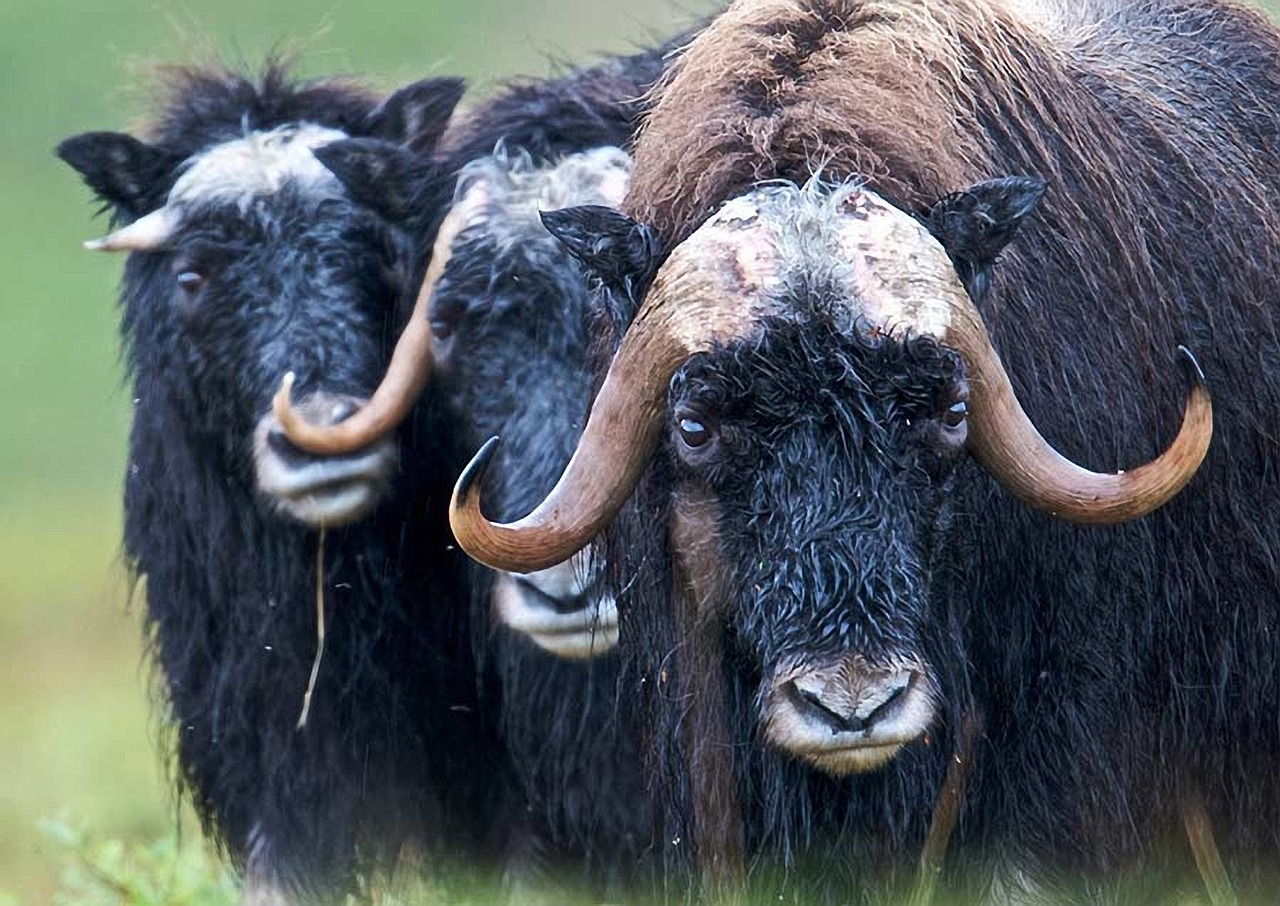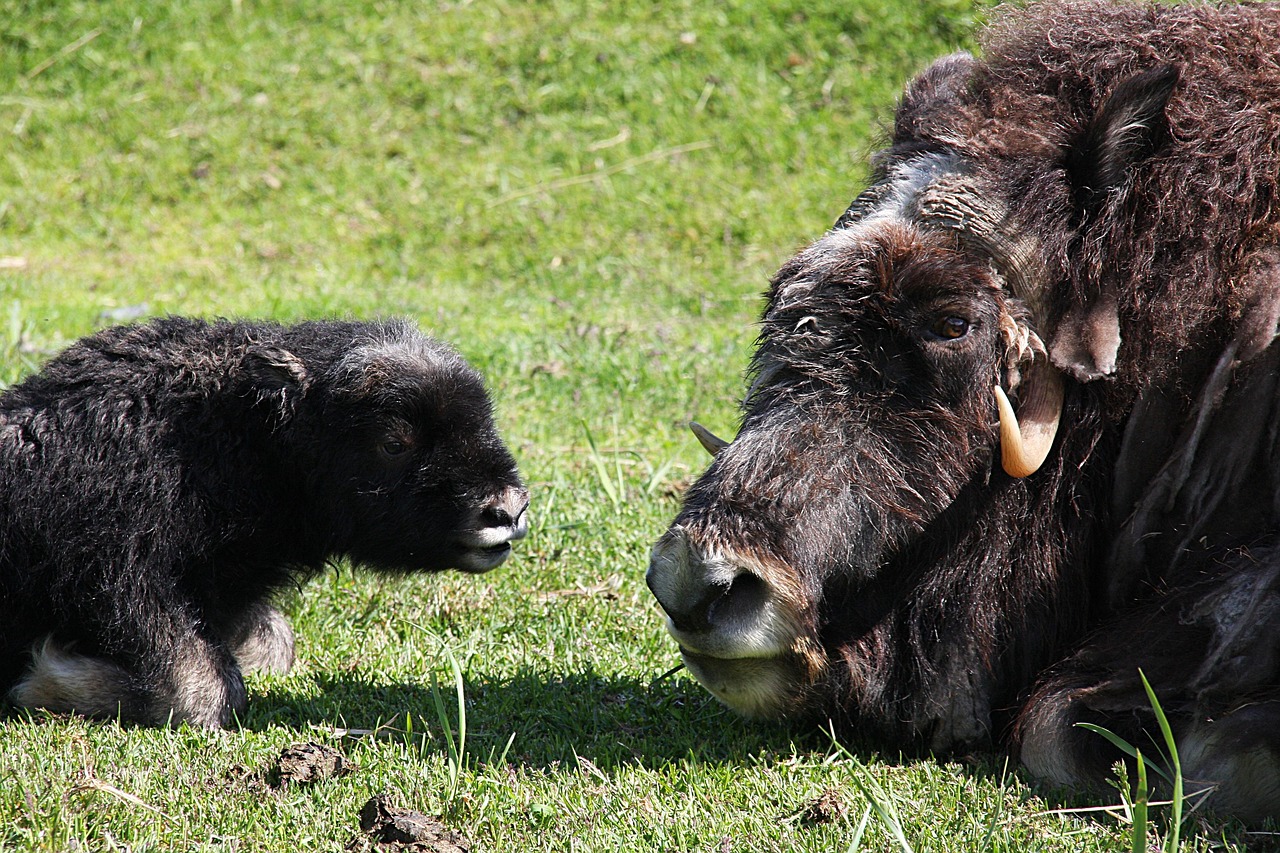Muskox


Characteristics:
The musk ox is a large, powerfully built animal with long hair, resembling a mix between a sheep and a buffalo. It measures 200–250 cm in length and stands 120–150 cm high at the shoulder. The coat is dark brown with long outer hair and a soft underwool (called qiviut) that provides excellent insulation against extreme cold. Both males (bulls) and females (cows) have strong horns that curve outward and then upward.
Distribution:
Musk oxen live in Arctic regions of North America and Greenland. In Sweden, a small wild population exists in Härjedalen, originally introduced from Greenland in the 1970s. They thrive in tundra-like mountain areas with open terrain and snowy conditions during winter.
Diet:
Musk oxen are herbivores that feed on grasses, mosses, lichens, herbs, and willow twigs. In winter, they dig through the snow with their hooves to reach food.
Young:
Cows usually give birth to one calf per year in April–May. The calf can stand and nurse shortly after birth and stays with its mother for the first year.
Rut:
The rutting season occurs in August–September. Bulls fight by charging at each other and colliding with their horns in powerful clashes to win access to the cows.
Calls:
Musk oxen are generally quiet, but they can grunt or snort deeply, especially during the rut or when threatened.
Tracks:
Their hoofprints resemble those of large cattle, round and broad, about 10–12 cm long. Their droppings are round and firm, similar to sheep pellets but larger.
Hunting:
The musk ox is protected in Sweden and may not be hunted. In some other countries, such as Canada and Greenland, limited and strictly regulated hunting is permitted.
